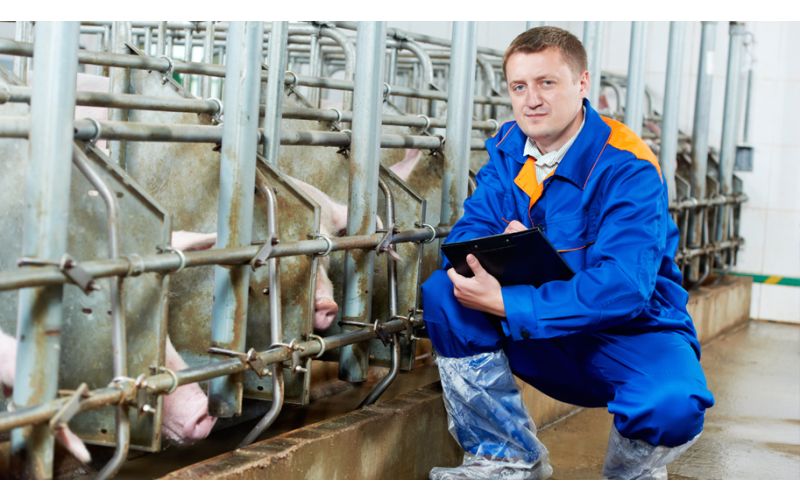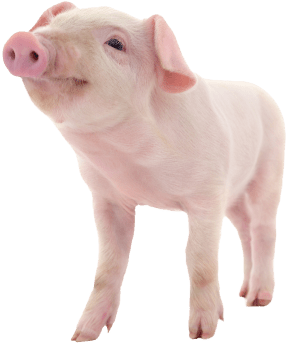
How to Make a Biosecurity Plan for Your Farm
|
|
Time to read 4 min
 You are being redirected to QC Supply Pharmacy, where you’ll find a wide selection of high-quality prescription and pharmaceutical products for animals of all sizes.
Enjoy the same great service and expertise you trust from QC Supply.
Click below to continue shopping.
Continue
No thanks, stay on the main site
Powered by
You are being redirected to QC Supply Pharmacy, where you’ll find a wide selection of high-quality prescription and pharmaceutical products for animals of all sizes.
Enjoy the same great service and expertise you trust from QC Supply.
Click below to continue shopping.
Continue
No thanks, stay on the main site
Powered by


|
|
Time to read 4 min
Biosecurity measures are intended to prevent the spread of infectious diseases into your operation. The goal of any biosecurity plan is to minimize the movement of threatening organisms and the dogs, cats, birds, and rodents that can carry them into your facility. Good biosecurity planning should also seek to reduce the possibility of human sources—vendors, visitors, and employees—from introducing them, as well. Though assembling an effective biosecurity plan can be time-consuming and the protocol implementation difficult, the alternatives to careful planning are too risky. Developing and implementing a biosecurity plan is much cheaper than replacing a flock or herd. In light of recent swine flu, mad cow, and salmonella outbreaks, producers need to have strict, detailed protocols to protect their investments and help safeguard public health.
The goal of a biosecurity plan is to interrupt the transmission, or path of pathogens. Pathogen control is essential because pathogens may enter a facility in a number of ways:
An effective biosecurity plan should seek to account for, and eliminate—or at least mitigate—these risk factors by establishing clear protocols. For the protocols to be successful, they must be clearly communicated to all facility employees and all employees must have total, 100% buy-in to the biosecurity protocols. There can be no gray area. Your employees must have an absolute understanding about what is required of them every time they enter the facility grounds.
.
Biosecurity planning can be usefully broken into three categories: isolation, traffic control, and sanitation.
Before new livestock enter the herd, animal quarantine protocols should be followed. Isolating them for a period of time will help ensure that any carriers are free of pathogens and will not infect healthy animals. New animals should be inspected, quarantined, and monitored for the duration of their isolation. Isolate newly purchased animals for a minimum of three weeks. Even healthy-looking animals can be carriers of pathogens and can easily infect large numbers of healthy animals. Most diseases run their course in two to three weeks. The longer you are able to isolate and monitor new animals, the greater your chances for avoiding livestock disease management issues.
Screening and testing new animals, while expensive, will help prevent unhealthy animals from entering the herd. The cost of screening, however, pales in comparison to the cost of herd replacement. Though disease screening is not fail-proof, a vigorous biosecurity plan should include screening as part of the animal health management process.
Sick animals should also be immediately isolated until producers are certain they no longer present a threat to the herd. All facilities should include isolation areas for sick animals.
Producers should note that any animal discharge is potentially contagious. Using the same equipment for both isolated and established herds can breach biosecurity protocols. This includes equipment used to feed and clean animals; any vehicles that might service both populations; and any employee clothing not cleaned between herds. All equipment should be cleaned before entering another building.
Producers should seek to create an environmentally safe bubble around their facility. Traffic control is essential to limit outside risks. Vehicles, animals (such as dogs, cats, birds, and rodents), and people all represent potential threats through foot and air traffic.
Vivid, easily seen signage that directs vehicle traffic, starting with some form of “do not enter” at the facility entrance, will help deter casual visitors. Vendors and other professional workers who must enter the facility should be made aware of biosecurity protocols and be expected to adhere to them. This includes specific parking locations and entries.
In the facility, producers should establish clear protocols for any movements between herds and/or buildings. Boot/foot mats and baths should be in place at doorways and changed at least once a day. Shower-in and shower-out protocols are becoming standard practices at many facilities to aid in infectious disease prevention .
Since pathogens are present in animal fluids, producers should be particularly careful to thoroughly clean equipment between herds and/or buildings.
Vaccination needles and syringes should never be shared when administering medications. As mentioned, sick animals should be isolated until treatment is complete.
Trash removal presents an additional risk. If waste removal companies service multiple production facilities, insist they service your facility first. You can also agree to have trash picked up off-site. Following biosecurity protocols will significantly lower the risk of contamination.
For any biosecurity plan to be successful, it must be practiced at all times. Employees should have the training required to be able to understand and follow all guidelines. Even the smallest infraction can have devastating results. All employees must not only understand the purpose of biosecurity protocols , but also adhere to them enthusiastically.
Similarly, producers should proactively educate the surrounding community about their facility by being active on local television, radio, and on social media; by speaking at town meetings; and by maintaining a presence at local animal shows and fairs.
The goal of a biosecurity plan is to establish a set of agricultural biosecurity practices designed to interrupt the transmission of pathogens to healthy animals. By addressing the many ways disease can be introduced to the facility, producers can limit the opportunity for future zoonotic disease prevention efforts by establishing a biosecurity plan now and putting it into practice.
Have you constructed a biosecurity plan for your facility? What challenges did you face? Tell us about your experience in the comments section!